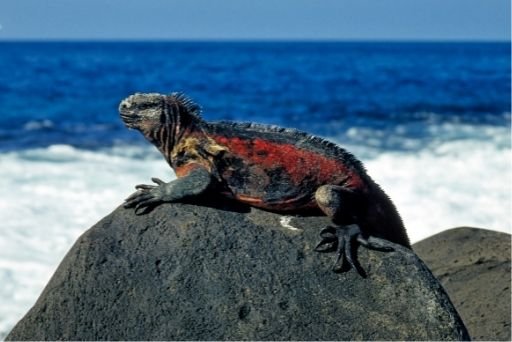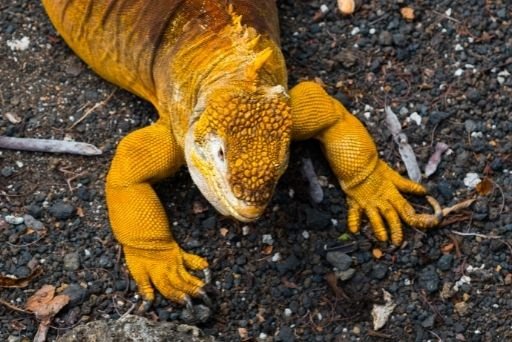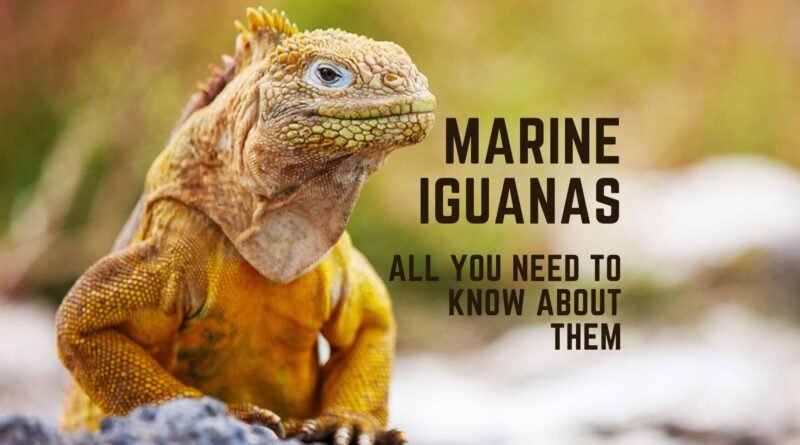Marine Iguanas: all you need to know about them
Marine Iguanas are nothing like the ordinary lizards you see in your home. These underwater lizards are far more fascinating, with an array of exciting characteristics. Although they are most vulnerable to extinction, they are highly engaging to observe.
If you do not know much about these lizards yet, do not worry. We are here to help you unleash all that you want to know about. So, let us help you take a peek into all about Marine Iguanas today!
All About Marine Iguanas to Leave You Awe-struck
Here are some of the most vivid details about Marine Iguanas you wish you knew before.

- Comprehensive Appearance
Marine Iguanas are short, fierce, and sharp-looking creatures. These lizards look incredibly creepy due to their dark complexion, blunt snouts, and razor-sharp teeth. They almost look like crocodiles due to their scary appearance. They also have sharp and long claws that enable them to cling to the rocks underwater. Their special glands allow them to clean their salt blood for the best experience. Generally, they are harmless creatures, with males weighing almost 3 pounds and females weighing about a pound. Also, the male marine Iguanas are 4.5feet in length while the females feature 3 feet. Thus, it would be fair to say that they are pretty significant. Oh, and they also have blunt noses, flat tails, and a row of spines to help them survive better underwater.

- Natural Habitat
Although it is rare to find Marine Iguanas, you may find plenty of them in the Galapagos Islands. Since there are no mammalian predators here for them, they find it easier to survive and preserve their being. They can come ashore for warm-up when they feel cold in the water regions. However, shallow reefs and coastlines are their favorite spots to reside in. So, they spend only some time underwater when they have to eat, but they can spend around 30 minutes whenever they are submerged.

- Feeding Habits
These are herbivore animals that mainly feed on seaweed and algae. So, there are almost 4 to 5 types of algae species that they can consume. Iguanas often consume ample amounts of sodium that prove harmful for them in several ways. That is why they sneeze excess salt as well. That is what helps them to prevent dehydration. Apart from this, they may also shrink when there is less availability of food. Due to their herbivore habits, they do not attack humans and other animals. However, they may eat grasshoppers and crustaceans sometimes. Oh, and in sporadic moments, they may also begin to eat feces underwater.

- Breeding and Reproduction
Breeding amidst them begins in January and goes on until April sometimes. They may breed by coming on top of one another and mating together. Generally, individuals can generate once every two years. However, when the males are producing, they become very aggressive and even territorial. They may also start pushing and shoving off their rivals. However, females lay one to 6 eggs and guard their nest very precisely. The entire process takes up to 95 days after which the eggs hatch. So, the process may be extremely slow in these animals.
- Population
It is believed that these Iguanas may have come from South America, dwelling from one place to another. Eventually, they have landed underwater in the Galapagos Islands. That is how marine iguanas were born and have become diverse due to differences in color, size, and even shape. Today, you can find numerous Marine Iguanas in the Galapagos Islands that will leave you stunned forever with their appearance.

- Threat to Survival
Marine Iguanas are sweet animals that do not disturb others often. However, they are primarily disturbed by other predators that run for their lives all the time. These vulnerable animals are preyed on by birds, Hawks, Owls, and even Herons in many cases. They may also be at potential risk by cats, dogs, rats, and other animals that prey on its flesh. But that is not all. Due to constant climate change, they are finding it difficult to make adjustments. As a result, their population has reduced drastically. Thus, they may be at massive risk and fighting a survival battle constantly underwater.
The Bottom Line
Marine Iguanas may look fierce, violent, and harmful, but they are harmless to humans. However, it is sorrowful that each year they are being attacked by humans in numbers. Also, climate change is making conditions worse for them to survive on this planet. That is why they are growing vulnerable to extinction.
To sum up, marine iguanas are fascinating creatures that are unique and intelligent in their way. These herbivore animals are also very protective about their breeding times and love warming up ashore whenever possible. These animals become a treat to the eye with such incredible features when you watch them from afar.




